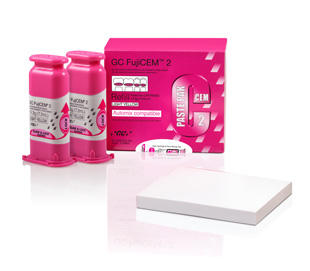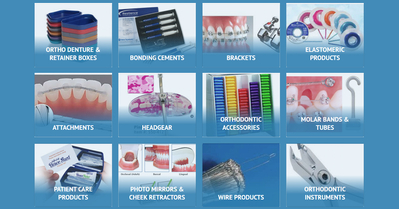Wearing-down of composite resins: what you should know
December 01 2019
Resin composites are probably better than amalgamates for posterior tooth restorations. This has pretty much been the consensus since 1999, when use of resins outstripped amalgams. Practitioners and patients liked the color matches, and by then were finally starting to trust composite restorations to last.
Composites are getting better, too. Interestingly, because they’re lasting longer, the reported causes of their failure has changed in recent literature. It’s wear that’s central to long-term restoration stability these days. The problem of wear weighs heavily enough on clinicians’ minds that a simple PubMed search will now turn up 10 or 15,000 articles on the subject just from the last 15 years. A thousand publications a year means that wear really is on everyone’s mind.
What’s causing the wear, exactly?
And does it matter what the composite is made of?
Different forms of wear
Engineers like to talk about wear as a function of mechanism involved – is it fatigue? Corrosion? Abrasion? Adhesion? Dental literature speaks in language of clinical presentation instead. Teeth wear at contact sites (this is spoken of as attrition), and at non-contact sites (abrasion), or they corrode generally, because of mouth chemistry. In restorative dentistry, it’s useful to use an amalgam (so to speak) of these two vocabularies.
If a tooth cusp forces against a composite surface, the tooth and the composite are both subject to adhesive wear, the minute breakage that can occur as the two surfaces are subject to shear forces from each other.
If material scrapes off a surface, this is abrasive wear. It can occur when two bodies come together, or as a 3-body situation, when particles of some other material are present as well.
As any materials scientist would suggest, constant restressing can also be expected to create, through compression and tension, fatigue wear, the micro-cracking that leads to abfraction.
And any biochemist would anticipate the presence of a chemical microfilm on the surfaces of teeth and their rebuilt surfaces. Foods, plaque acids, and enzymes all contribute to corrosive wear.
Wear and composite type
High viscosity resin composites, which come in many varieties, wear in ways that are generally a function of differing resin matrices, coupling agents, and filler properties (volume fraction, size of particle, density, and so on). Classically, wear resistance is better with a higher filler volume fraction. The jury is out, though, on whether these are the only factors at play in wear. The picture may be more complex than that.
Nanofilled composites are the big news lately, of course. They do look promising. They’re showing very good mechanical performance, good surface and gloss characteristics, and less shrinking from polymerization. But those particles make for a larger interface between fillers and resin. What will this do after enough chewing? Trials about this are encouraging so far, but they remain limited. The clinical community is watching.
Low viscosity resin composites are getting better, with more advanced matrices, and different use of fillers. These ‘flowable’ composites are more widely used than they used to be. Machine wear testing seems to show at least non-inferiority to the nanofilled composites. Again, as one investigator has suggested, filler size probably matters. It might also be, observes the same investigator, that including nanoparticles into flowable resin composites might be a very wise thing to try.
Indirect resin composites, popular with patients because they necessitate only one appointment, last as well as direct composites do. Indirect resins appear to have the advantage in polymerization shrinkage and its related problems too. Literature is currently full of battles over how best to manage light cure and post-cure heat treatment.
CAD/CAM resin composites, some of which contain nanoparticles, are polymerized under high pressure and high temperature. They’re easily made, and easily restored. Wear, so far, seems small. Certainly it’s smaller than for CAD/CAM ceramic restorations. Research is still limited, though. No one really knows yet how well these composites finally last.
This, where wearing patterns and use of different materials are concerned, is as much as we know.
What’s next in resin composites? Better molecules, of course. Possibly better ways of distributing fillers. Maybe even resins that fill in their own cracks. When they arrive, we’ll have them all here, at Sky Dental.
Recent posts

07-18-2025
Textured vs. Smooth Nitrile Gloves

02-12-2025
Ultrasonic scalers

10-17-2024
High Definition Black Line Mirrors

09-27-2020




